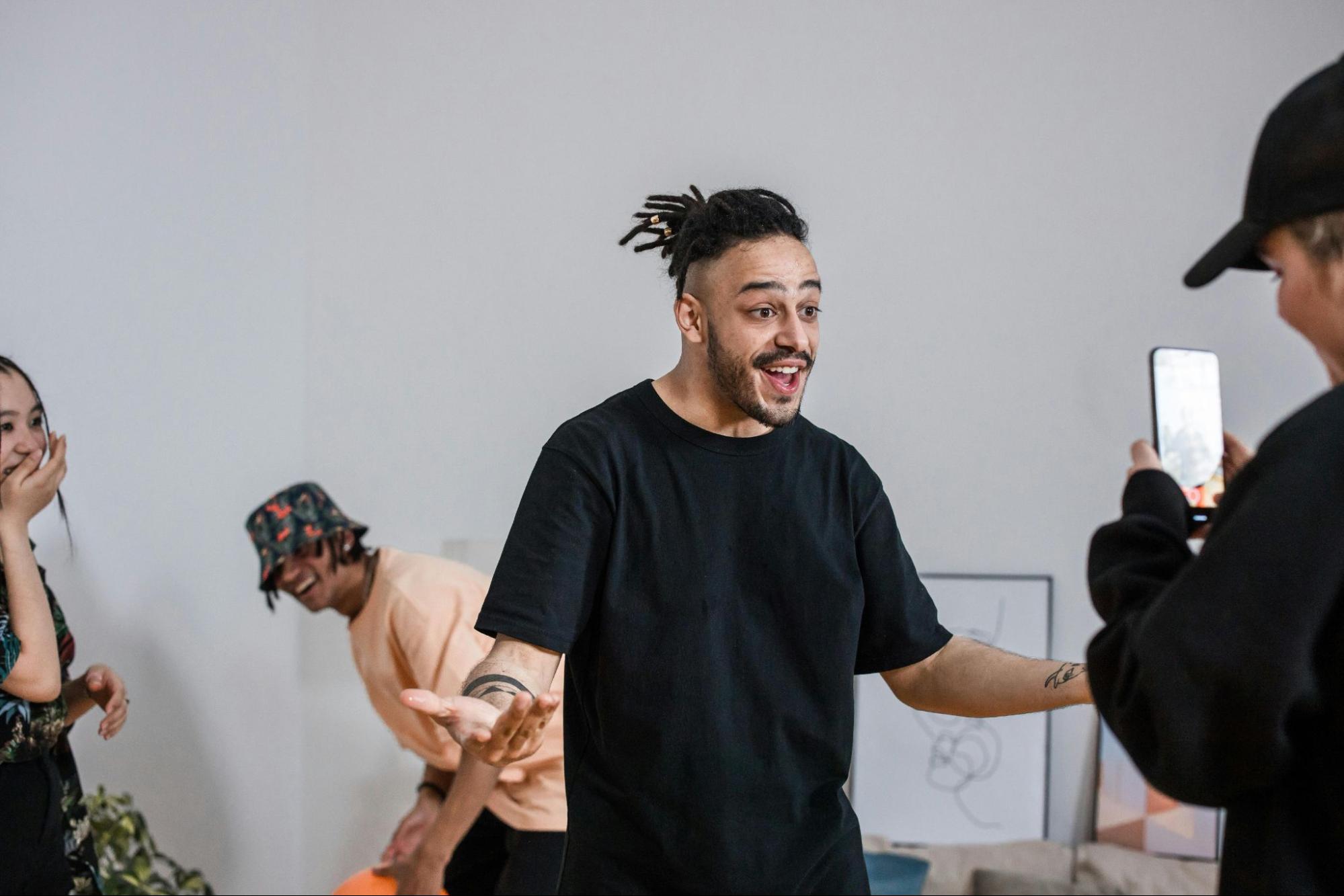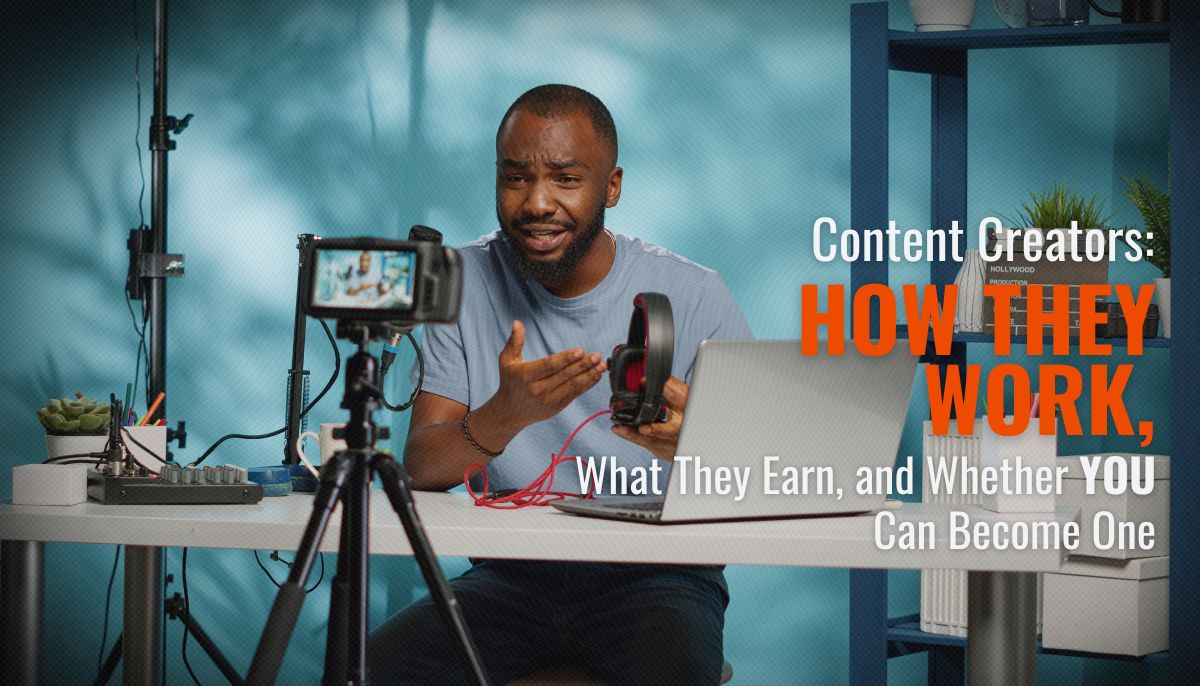Till about six to seven years ago, telling someone you were a ‘content creator’ got blank stares or assumptions you were unemployed.
Now it's an actual career path. Kids say they want to be YouTubers when they grow up. Adults quit corporate jobs to make TikTok videos full-time.
The entire concept of content creators has shifted from weird internet things to legitimate professions.
The digital world has reshaped how people consume information, entertainment, and even education, so it’s no surprise that content creators have become central to how brands communicate.
Whether it’s a thoughtful blog post, a viral TikTok, or a beautifully crafted YouTube tutorial, content creators are the people shaping online conversations every day.
But what does that actually mean? Everyone throws around ‘content creator’ like it's self-explanatory, except it's not.
The term covers everything from mega-influencers making millions to someone posting iPhone videos on weekends for fun.
Understanding what content creators actually do, how someone becomes one, and what realistic earnings look like matters if you're considering this path, or if you're a business trying to work with them.
Let's talk about what this career actually involves, stripped of the glamorous highlight reels most people see.

What Is a Content Creator?
A content creator is someone who produces digital content, including videos, photos, articles, podcasts, graphics, and more, and distributes it online, usually building an audience in the process.
That's the broad definition, but it covers wildly different activities and commitment levels.
Some content creators are full-time professionals. This is their job.
They create content daily or multiple times weekly, monetize through various channels, and treat audience growth as their business metric. These people are entrepreneurs building media companies around their personal brand.
Others are part-time creators. They've got day jobs, but create content on the side. Maybe building toward full-time eventually, maybe just enjoying a creative outlet with bonus income potential.
This category is huge in Canada, where cost of living makes pure content creation income risky.
Then there are hobbyist creators who post for fun or passion without serious monetization goals. They're creating content, building an audience, maybe, but not dependent on it financially.
Still, content creators, technically, just different in motivation and commitment levels.
The platforms vary, too. YouTube is for video, Instagram is for photos and short videos, TikTok for short-form content, Twitch for livestreaming, podcasts for audio, blogs for written content, and LinkedIn for professional content.
Most successful creators are on multiple platforms, repurposing content across channels.
What unifies actual content creators versus people who just post occasionally is consistency and audience-building intent.
The content spans every possible topic. From gaming to cooking to fitness and finance, anything can be a content creation topic if there's an audience for it.
How to Become a Content Creator
Starting is weirdly both easier and harder than it looks. Easier because the path to becoming a creator is surprisingly accessible. You've got a phone with a camera; you can start creating today.
Harder because building actual audiences and making it sustainable takes way more work than people realize.
Pick your niche. Not necessarily a narrow niche, but some consistent theme or style that gives your content identity. Your lane can evolve, but start with something specific.
Start creating before you feel ready. Everyone's first videos or posts are rough. That's normal. Waiting until you are perfect means never starting. You get better by doing, not by preparing to do.
Invest in basic quality. You don't need a $5,000 camera, but audio matters more than people think. Bad audio makes content unwatchable, even if the video quality is great. A good mic is more important than a good camera.
Consistency beats perfection. Posting decent content every week beats posting perfect content every six weeks. Algorithms reward consistency.
Audience-building requires consistency. Create a publishing schedule you can actually maintain long-term and stick to it.
Engage with your audience and other creators. Comment on similar content, respond to comments on yours, and join communities in your space. Content creation is about building relationships. The creators who grow fastest are usually the ones most active in their communities.
Study what works in your space. Watch successful creators in your niche. What formats work? What topics get engagement? How do they structure content?
Be patient with growth. Most creators don't see significant audience growth for months. The overnight success stories are rare exceptions, not the norm. If you're not seeing traction after two months, that's completely normal.
Keep creating, keep improving, give it at least six months before evaluating whether it's working.

How Much Do Content Creators Make
Monetization comes after the audience. Don't worry about making money until you've built an audience first.
Trying to monetize too early with a small audience will not help you in any way. Focus on creating valuable content and building a loyal following. Money follows the audience, not the other way around.
If you’re wondering how much content creators make, the range is absurd. Top creators make millions. Most make nothing or barely anything. The middle is surprisingly viable, but not glamorous.
YouTube ad revenue varies wildly by niche. Finance and business content pays way more per view than entertainment content because advertiser rates differ.
1,000 views might generate $2 to $10, depending on content type and audience demographics. Canadian creators often see slightly lower rates than American creators, but not dramatically.
Sponsorships and brand deals are where real money lives for most professional creators. A creator with 50,000 engaged followers might charge $500 to $2,000 per sponsored post, depending on the platform and engagement rates. Mega-influencers charge tens of thousands per post. This is a highly variable and negotiated case-by-case basis.
Affiliate marketing generates passive income. You recommend products, and get a percentage of sales from your links. It works well for review content, tutorial content, and recommendation content.
Income depends entirely on audience size and trust. Established creators can make thousands monthly from affiliate relationships.
Digital products and services turn expertise into direct income. If you've built an audience around expertise, you can monetize that knowledge directly.
Patreon and membership platforms let superfans support you directly. Works better for some content types, such as gaming, art, or education, than others. Creators with 1,000 true fans paying $5 to $10 monthly can generate a viable income even without massive audiences.
Can You Be a Content Creator While on Disability
This is a common question, and an important one.
Content creation is often flexible enough to fit around energy levels, mobility limitations, or health restrictions, making it appealing for people on disability benefits.
Disability benefits in Canada have income and work restrictions that vary by program. CPP Disability allows some work under the ‘gainful employment’ threshold. Provincial programs have different rules.
You need to understand your specific program's requirements before earning content creation income.
Content creation income counts as self-employment income. This triggers different reporting requirements than employment income. Some disability programs are more restrictive about self-employment than employment because earnings are less predictable.
The unpredictability of content creation income creates problems for disability reporting. One month you make $100, next month $800, the month after that $200. This variability makes it hard to stay under income thresholds and complicates reporting requirements.
Physical and mental capacity matter obviously. Content creation can be flexible; create when you're able, rest when needed. But it still requires consistent output to build an audience.
If your disability makes consistency difficult, that affects whether content creation is a viable path for you.
Some provinces have programs supporting people with disabilities in starting businesses. These might provide exemptions or support for content creation income. Research what's available in your province specifically.
Being transparent with your disability program is crucial. Unreported income can jeopardize benefits. The risk of losing benefits often isn't worth potential content creation income if you're dependent on those benefits for stability.
Consider starting very slowly if you're on disability and interested in content creation. Begin as a hobby, see if you can maintain consistency, and understand your capacity.
Some content creators with disabilities share their experiences as part of their content. Disability advocacy, accessibility content, and lived experience perspectives can be powerful content angles while being open about your situation rather than hiding it.
Consult with a disability benefits advisor or lawyer if you're seriously considering content creation while on disability. Rules are complex, consequences of getting it wrong are serious. Professional guidance specific to your situation and province protects you from making expensive mistakes.
Making It Work as a Content Creator

Whether you're aiming for a full-time career or side income, content creation is real work that requires strategy, consistency, and realistic expectations.
Content creation can be a legitimate career path, a valuable side income, or a fulfilling creative outlet.
Just remember that what you see from successful content creators is the final product, not the hours of planning, filming, editing, engaging, and strategizing behind it.
The glamorous life you see in content is marketing. The actual work is still work, often more demanding than traditional employment, because you're never really off the clock.
But for people who thrive on creative freedom, building something of their own, and connecting directly with audiences, content creation offers opportunities that didn't exist a decade ago.








.avif)


